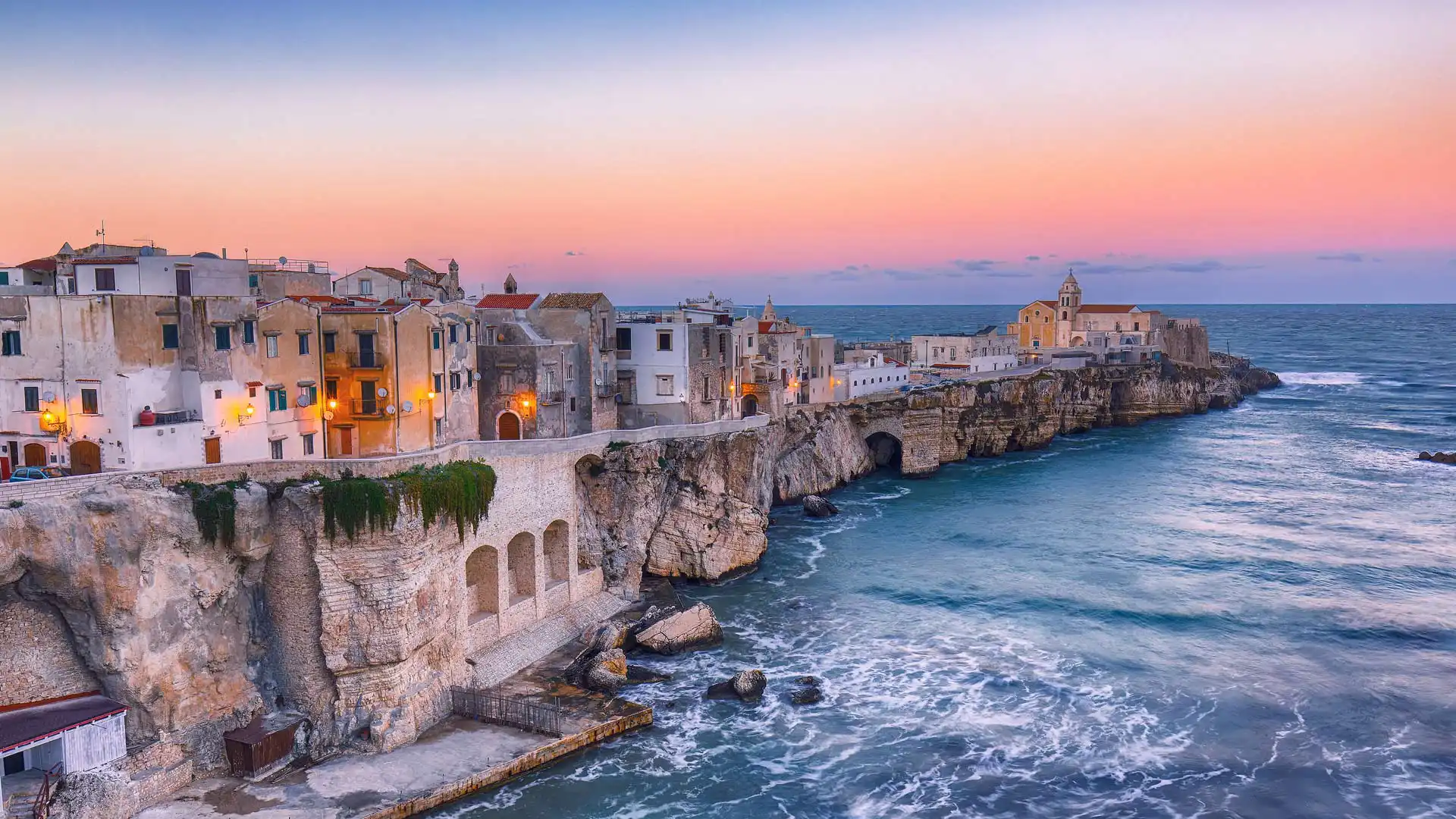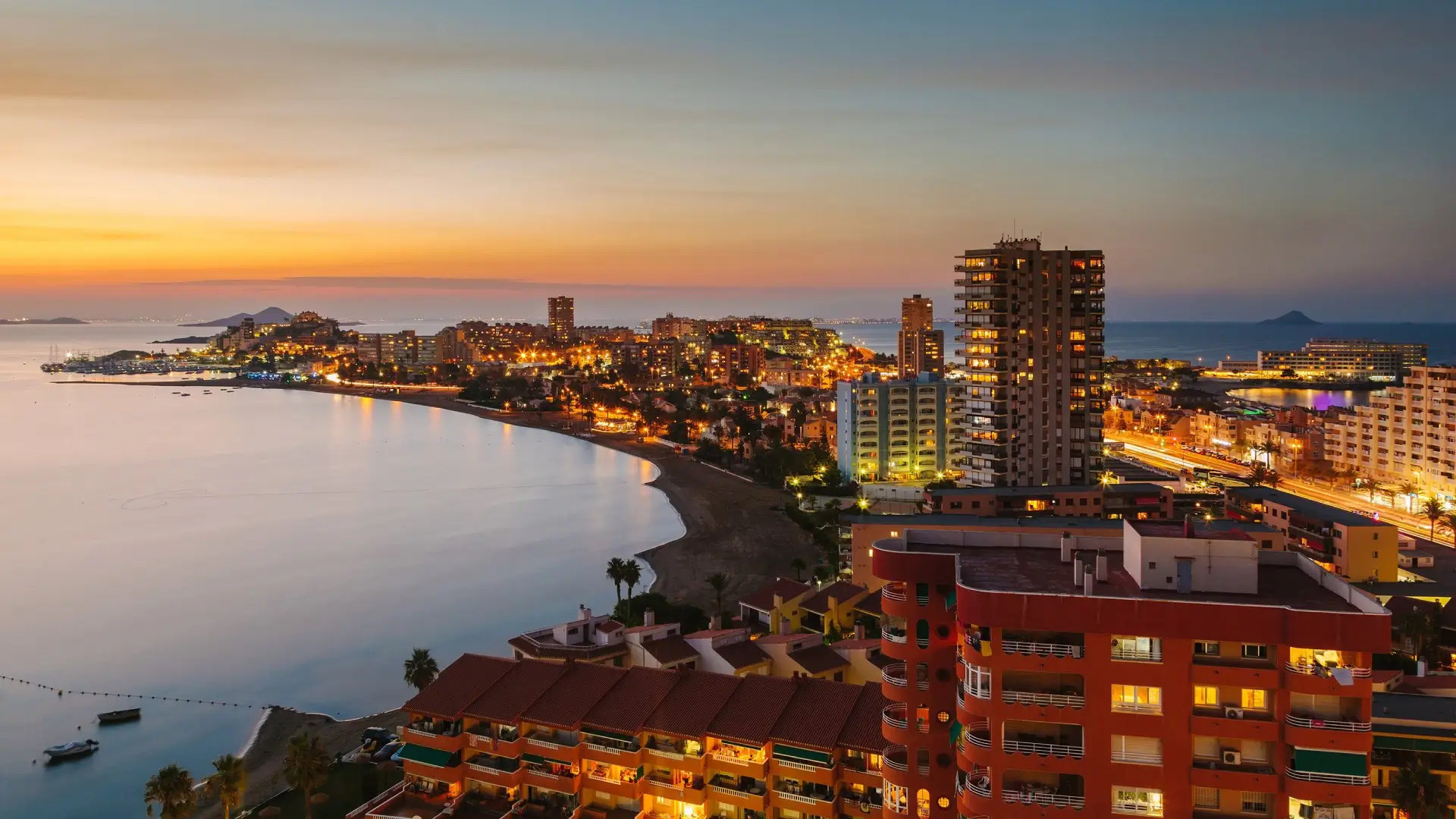印第安头湾, 布鲁斯半岛国家公园, 安大略, 加拿大 Indian Head Cove, Bruce Peninsula National Park, Ontario, Canada (© Maurice Prokaziuk/Getty Images)
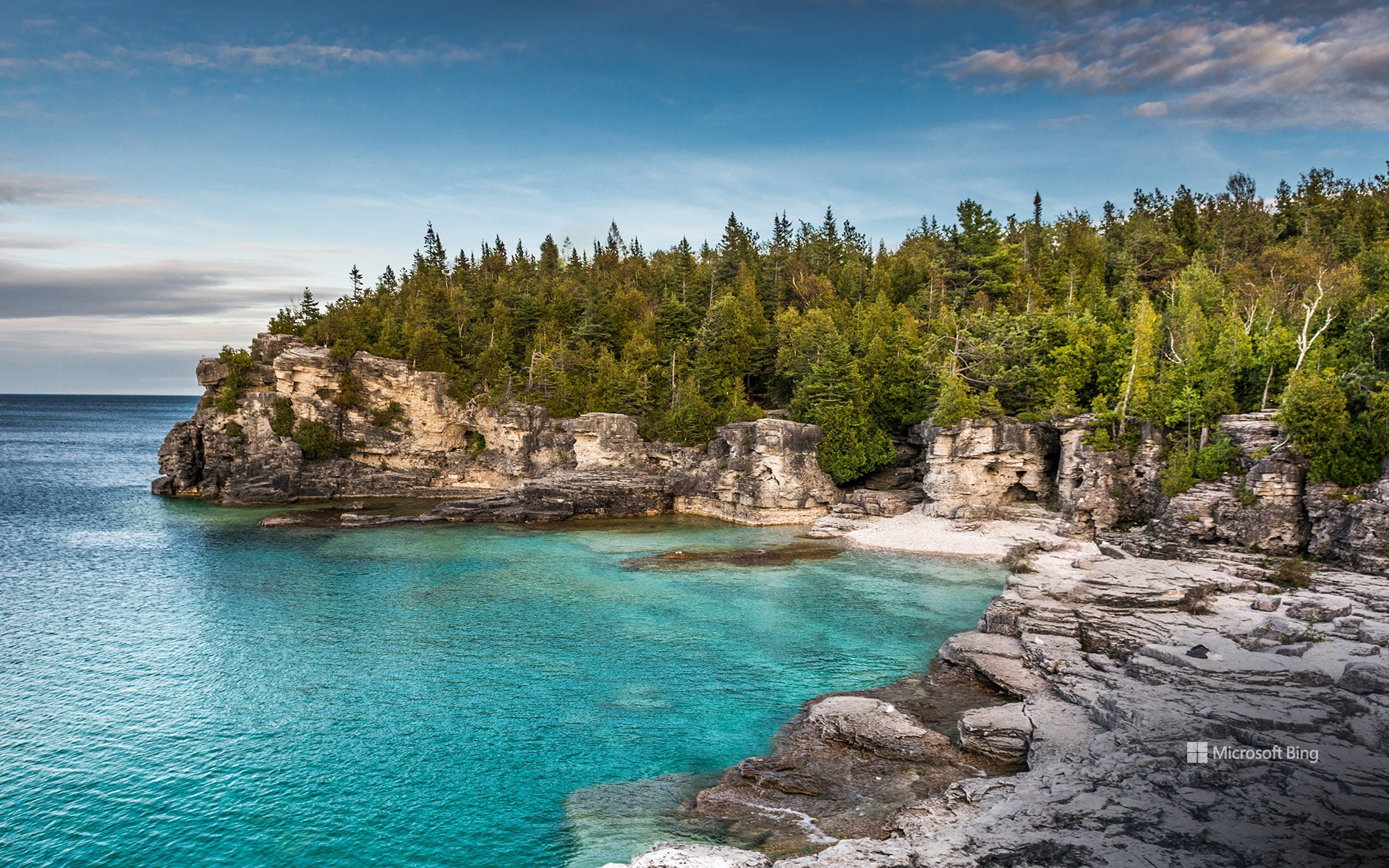
印第安头湾, 布鲁斯半岛国家公园, 安大略, 加拿大 Indian Head Cove, Bruce Peninsula National Park, Ontario, Canada (© Maurice Prokaziuk/Getty Images)
悬崖、洞穴与清澈的水域 Cliffs, caves and clear waters
印第安头湾, 布鲁斯半岛国家公园, 安大略, 加拿大
布鲁斯半岛国家公园是安大略省一段令人叹为观止的尼亚加拉断崖地貌,由时间与水流共同雕琢而成。该公园于 1987 年设立,保护着高耸的石灰岩悬崖、隐秘的洞穴、茂密的森林和未被破坏的湖岸线。作为联合国教科文组织生物圈保护区的一部分,这里是多种适应崎岖地形的野生动物的避难所,比如黑熊、大响尾蛇和白尾鹿。
公园内拥有多条徒步步道,包括长距离的赛普里斯湖步道和布鲁斯步道。游客可以穿越茂密森林,探索喀斯特地貌、卵石海滩和宁静的草地。当你深入公园,自然会展现出静谧而惊艳的景象:东部草原流苏兰为小径增添色彩,古老的雪松树顽强地扎根于岩石边缘,仿佛在挑战地心引力。这里还有著名的“岩洞”,位于马尔湖和乔治亚湾步道之间的湖岸线上。这座令人惊叹的石灰岩洞穴内,碧蓝的水波光粼粼,每一步徒步都值回票价。无论你是为美景、野生动物而来,还是想在乔治亚湾中畅游一番,这座国家公园都能带来一段难忘的逃离喧嚣之旅。
日出时的羽扇豆田和教堂,斯奈山半岛,冰岛 Lupine fields and church at sunrise, Snæfellsnes Peninsula, Iceland (© Matteo Colombo/Getty Images)
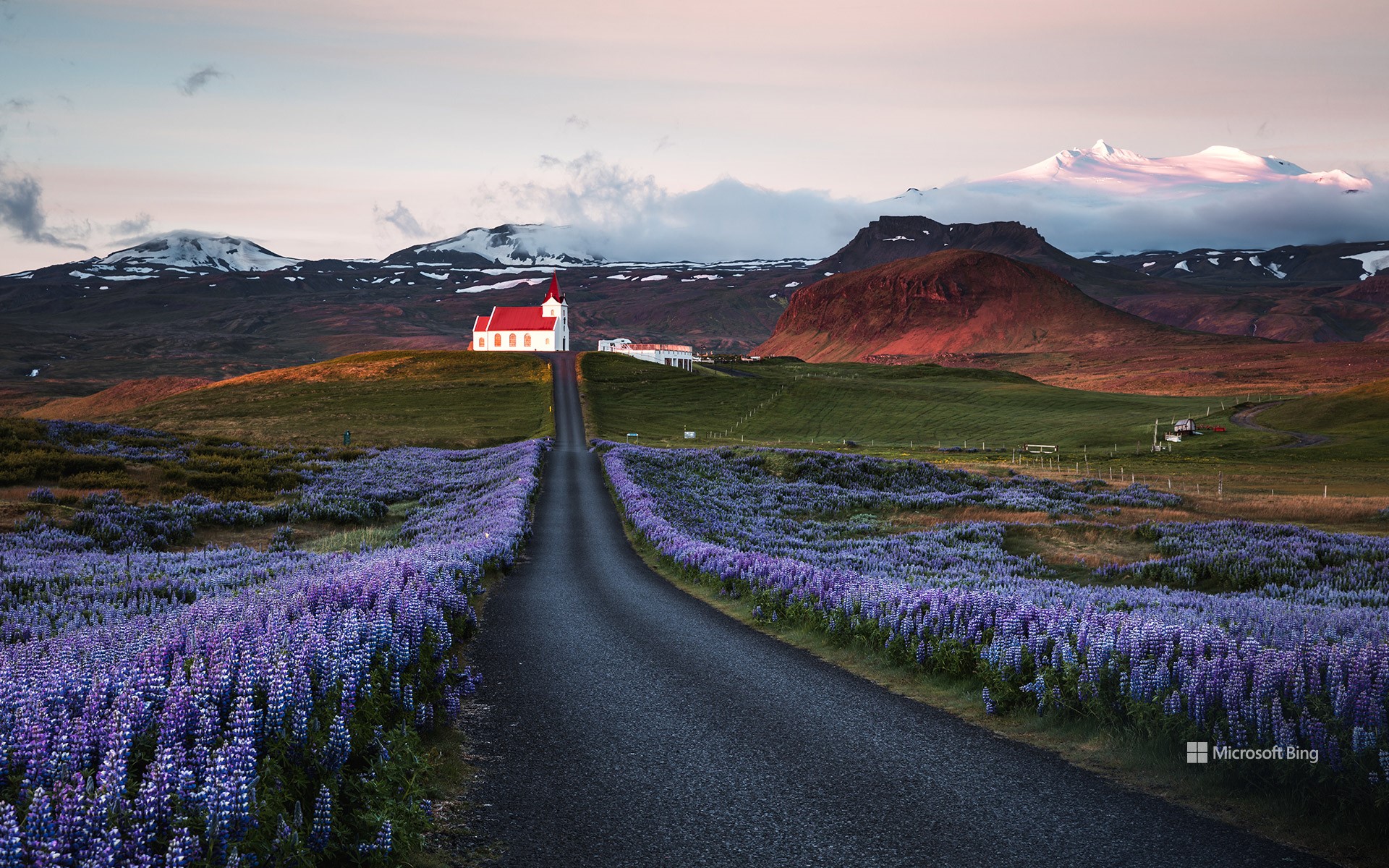
日出时的羽扇豆田和教堂,斯奈山半岛,冰岛 Lupine fields and church at sunrise, Snæfellsnes Peninsula, Iceland (© Matteo Colombo/Getty Images)
羽扇豆田和教堂,斯奈山半岛,冰岛
随着冰岛春夏交替,崎岖的地貌呈现出五彩缤纷的景象。由于羽扇豆的根部具有土壤粘结性,冰岛在20世纪40年代引进了羽扇豆,用于控制水土流失。羽扇豆在含沙和含盐的土壤中生长茂盛,繁殖迅速,给乡村涂上了绚丽的紫色、粉色和蓝色。虽然有些人认为羽扇豆是一种入侵物种,会对本地植物造成威胁,但它深受当地人和游客的喜爱,被视为夏季景观的一大亮点。在雷克雅未克和斯科加福斯瀑布附近等多个地区都能看到羽扇豆花田。这些花儿也盛开在通往斯奈山半岛海利桑杜尔教堂的道路两旁,如今天的图片所示。
斯奈山半岛除了盛开着美丽的羽扇豆花之外,还有丰富而独特的地质地貌。如果你想在一个地方同时体验高耸的火山、广阔的熔岩区、迷人的冰川以及未受破坏的海滩,这里就是你寻找的理想之地。
Lupine fields, Snæfellsnes, Iceland
As spring gives way to summer in Iceland, the rugged landscape bursts into color. Lupines were introduced here in the 1940s for their soil-binding properties, to reduce erosion. The plant flourishes in sandy and salty soils and spreads rapidly, bringing hues of purple, pink, and blue. Although some consider lupine to be a threat to native plants, it is welcomed by many as a cherished part of the summer landscape. You can find lupine fields in Reykjavík, near the Skógafoss waterfall, and lining the road to the Hellissandur Church in the Snæfellsnes Peninsula, as seen in today's image.
加尔加诺半岛上的维埃斯特,阿普利亚,意大利 Vieste on the Gargano peninsula, Apulia, Italy (© Pilat666/Getty Images)
加尔加诺半岛上的维埃斯特,阿普利亚,意大利 Vieste on the Gargano peninsula, Apulia, Italy (© Pilat666/Getty Images)
住在悬崖边的日子 Life on the edge
维埃斯特,阿普利亚,意大利
维埃斯特是意大利东海岸一个风景如画的小镇。它的历史是由诺曼人、拜占庭人和罗马人等不同文明编织而成的,可以追溯到数千年前。小镇的历史中心不仅有迷宫般的小巷、古色古香的建筑,还有一座可以俯瞰亚得里亚海的中世纪斯瓦比亚城堡。然而,真正吸引游客的是维埃斯特迷人的自然景观。这里以壮观的石灰石悬崖、原始的海滩和清澈的海水而闻名。事实上,维埃斯特的海水非常清澈,其水质已获得蓝旗认证。闻名遐迩的皮佐穆诺岩层有许多与之相关的传说,这些传说往往是关于一个名叫皮佐穆诺的年轻人和他的爱人克里斯塔尔达的故事的变种。维埃斯特集历史、自然奇观和休闲活动于一体,对于那些寻求纯正意大利体验的游客来说,这里仍是一个引人入胜的目的地。
Vieste, Apulia, Italy
Vieste is a picturesque town on the eastern coast of Italy. With origins dating back thousands of years, its history is a tapestry woven by various civilizations, including the Normans, Byzantines, and Romans. The town's historic center is filled with charming narrow streets, ancient architecture, and a medieval Swabian castle overlooking the Adriatic Sea. Perched on dramatic limestone cliffs, its stunning natural landscape also boasts pristine beaches and clear waters that have Blue Flag certification for their quality. The famous Pizzomunno rock formation has various legends associated with it, often about a young man of the same name and his lover Cristalda. With its blend of history, natural wonders, and leisure pursuits, Vieste remains a captivating destination for those seeking an authentic Italian experience.
拉曼加,穆尔西亚,西班牙 (© SOMATUSCANI/Getty Images)
瓜纳阿卡维韦斯半岛国家公园的红树林,古巴 Red mangrove tree seedlings in Guanahacabibes National Park, Cuba (© Claudio Contreras/Minden Pictures)
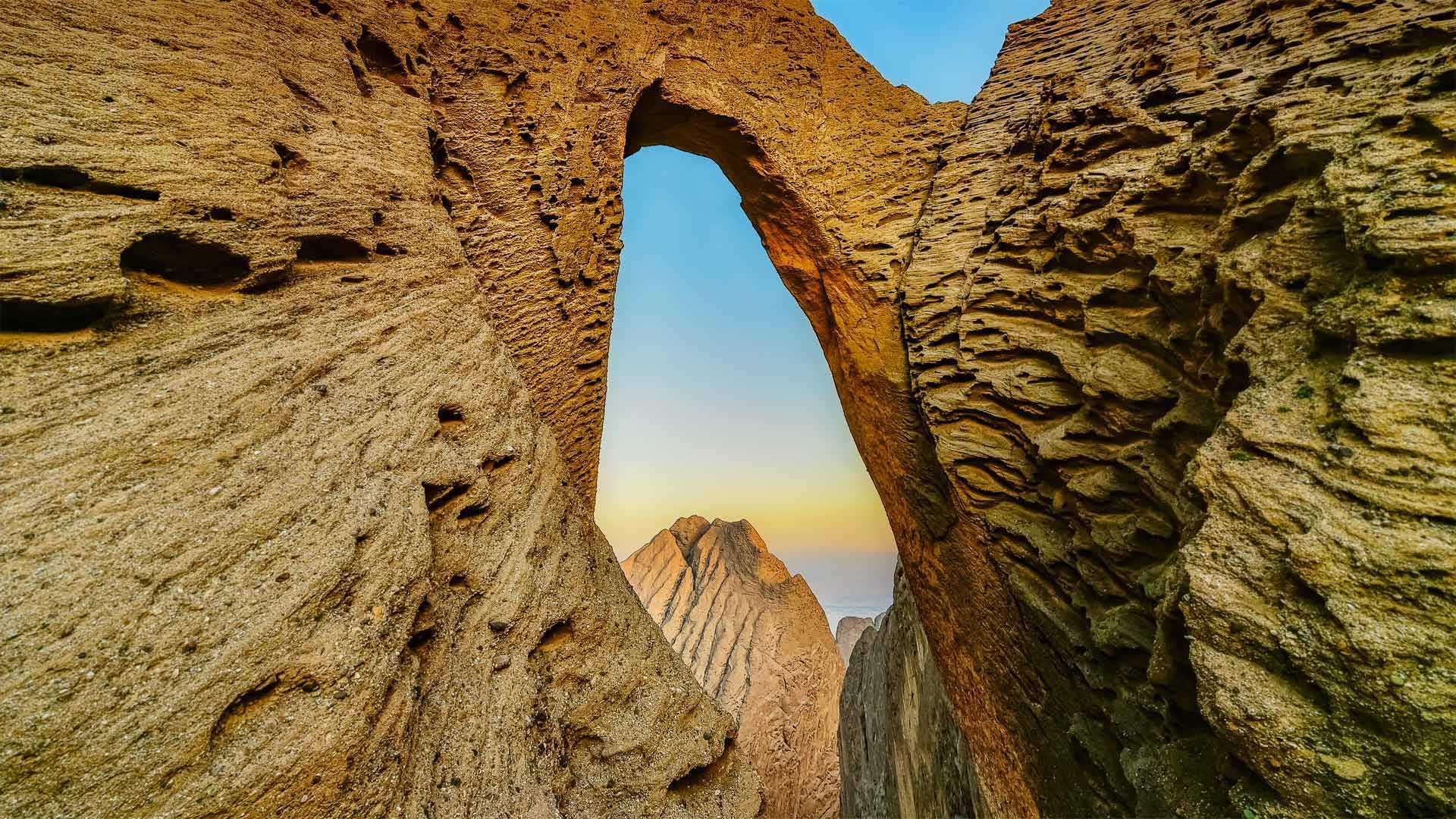
瓜纳阿卡维韦斯半岛国家公园的红树林,古巴 Red mangrove tree seedlings in Guanahacabibes National Park, Cuba (© Claudio Contreras/Minden Pictures)
向伟大的红树林致敬! All hail the mighty mangrove!
瓜纳阿卡维韦斯半岛国家公园,古巴
今天照片里的是古巴的瓜纳阿卡维韦斯半岛国家公园的红树林幼苗。红树林特别适合在淡盐水或盐水中生长,它们不仅能够保护海岸线,而且还是热带沿海生态系统的重要组成部分。这些顽强的树木可以承受巨浪和狂风,还能抵御海上风暴和海水侵蚀的破坏性影响。
在水面之下,红树林依然努力工作。它们复杂的根系可以过滤盐分,为海洋生物提供庇护和保护,促进生物多样性。瓜纳阿卡维韦斯有好几种海龟、红沼泽螯虾、以及大量的爬行动物和两栖动物。
向伟大的红树林致敬还有另外一个原因:它们从大气中捕获的二氧化碳比热带雨林多十倍。因此红树林也是优质碳汇,它们在根系里储存的二氧化碳远多于陆地植物。
Guanahacabibes National Park, Cuba
Today we're admiring red mangrove seedlings at Guanahacabibes National Park in Cuba. Mangrove forests not only protect coastlines but are a crucial component of tropical coastal ecosystems and are uniquely suited to thrive in brackish or salty water. These hardy trees can withstand the force of tremendous waves and ferocious winds, fending off the damaging effects of storms and erosion.
Below the surface, they work just as hard: Their complex root systems filter out salt and provide shelter and protection for marine life, encouraging biodiversity. Here in Guanahacabibes, that marine life includes several species of turtles as well as red swamp crayfish and a slew of reptiles and amphibians.
Another reason to tip our hats to the mighty mangroves? They capture up to 10 times more carbon dioxide from the atmosphere than tropical forests do. They're also incredible carbon sinks, storing much more carbon in their roots than their terrestrial counterparts.
伊豆半岛海岸附近的 Minokake-Iwa 奇岩群,日本 The Minokake-Iwa rocks off the coast of the Izu Peninsula, Japan (© Krzysztof Baranowski/Getty Images)
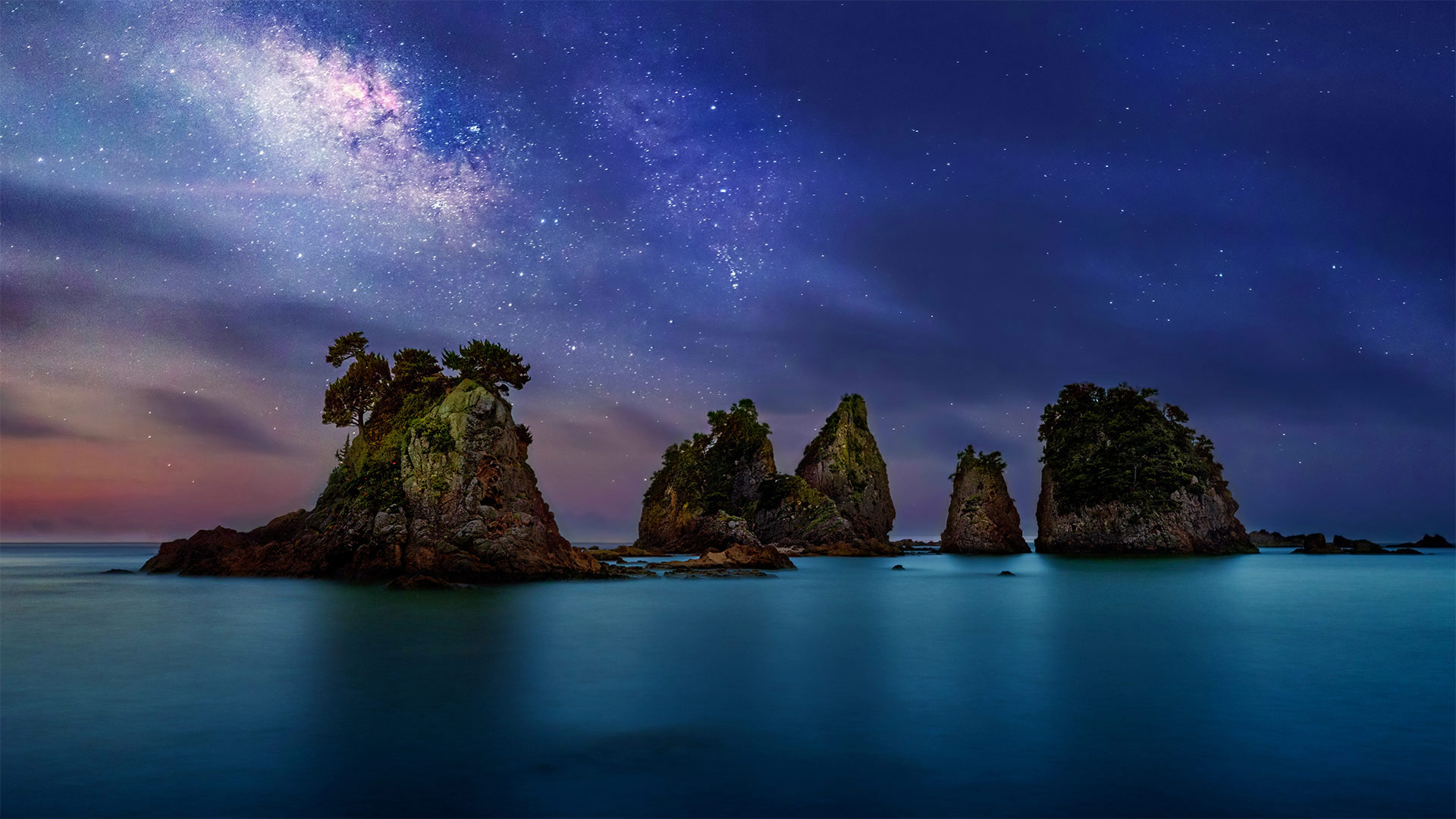
伊豆半岛海岸附近的 Minokake-Iwa 奇岩群,日本 The Minokake-Iwa rocks off the coast of the Izu Peninsula, Japan (© Krzysztof Baranowski/Getty Images)
Singing praises of the oceans
In Japan, mid-July brings an excuse to head to the beach, as if we really needed one. That's because this time of year marks Marine Day (aka Ocean Day), an observance recognizing the close bond the island nation shares with the seas and ocean that surround it. Because Marine Day roughly coincides with the end of the rainy season, it has, over the years, become a sort of unofficial kick off to the hot summer season. One place sure to attract visitors is the picturesque Minokake-Iwa rock formation seen here, lying off the coast of Honshū's mountainous 31-mile-long Izu Peninsula.
Ordinarily Marine Day is observed on the third Monday in July, but this year the holiday was moved to immediately precede the start of the Summer Olympics in Tokyo. So, this is the day to hit the beach in Japan, just before the Olympics' opening ceremonies begin tomorrow.
歌颂海洋
在日本,七月中旬给我们带来了一个去海滩的借口,好像我们真的需要一个。这是因为每年的这个时候都是海洋日(又名海洋日),这是一个认可岛国与周围海洋紧密联系的节日。由于海洋日大致与雨季的结束相吻合,多年来,它已成为炎热夏季的一种非正式开端。一个肯定会吸引游客的地方是这里风景如画的Minokake Iwa岩层,位于本什岛31英里长的伊豆半岛的海岸线附近。
通常海洋日是在七月的第三个星期一,但是今年这个节日被转移到了东京夏季奥运会开始之前。所以,今天是去日本海滩的日子,就在明天奥运会开幕式开始之前。
